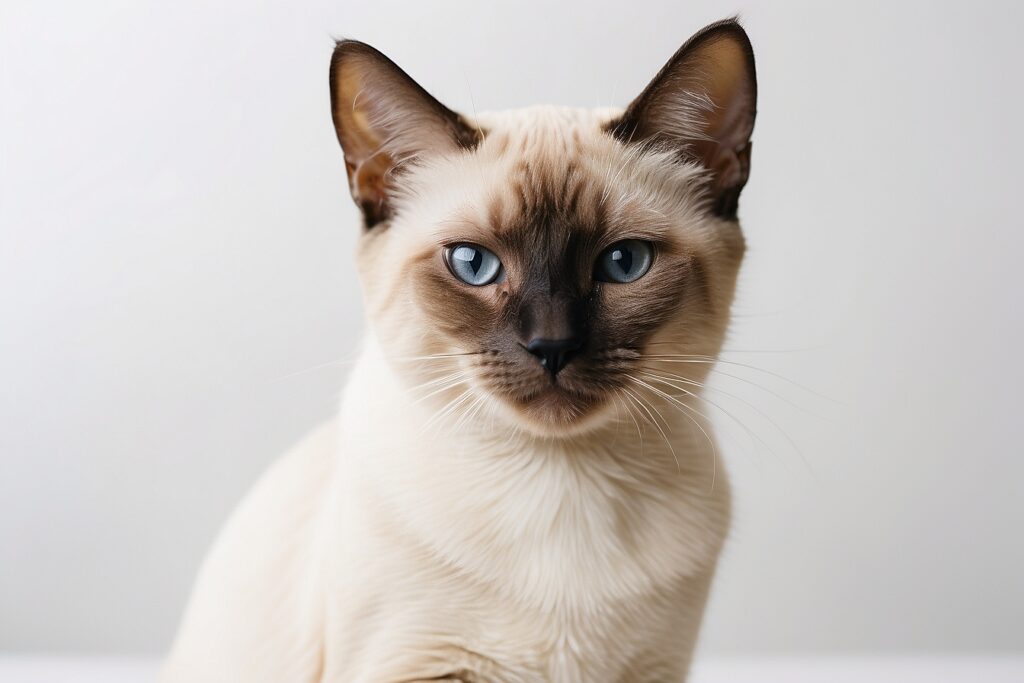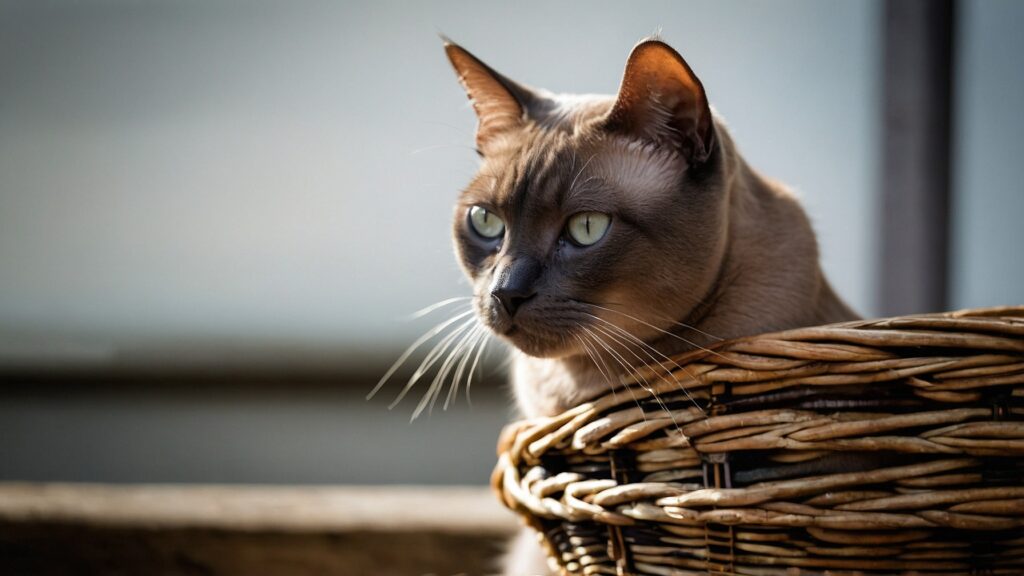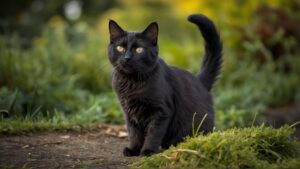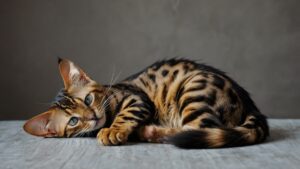For many cat lovers, the idea of having a feline companion by their side for as long as possible is a dream come true. While the average lifespan of a domesticated cat is around 12 to 15 years, certain breeds are known for their remarkable longevity, making them the perfect choice for those seeking a long-lasting furry friend.
In this comprehensive guide, we’ll delve into the world of the longest living cat breeds, exploring their unique characteristics, care requirements, and the factors that contribute to their exceptional lifespans. Get ready to discover the secrets behind these feline superstars and how you can help your cat thrive for many years to come.
Table of Contents
Top Longest Living Cat Breeds
Siamese

Average Lifespan: 12-20 years
The Siamese is a breed that stands out not only for its striking appearance but also for its impressive longevity. These intelligent and vocal felines are known for their affectionate and loyal nature, forming strong bonds with their owners.
Characteristics:
- Elegant and slender build
- Distinctive blue eyes and pointed coat pattern
- Sociable and demanding of attention
- Highly vocal and communicative
Care Tips for Longevity:
- Provide mental stimulation through interactive toys and puzzle feeders
- Maintain a balanced diet rich in high-quality protein
- Ensure regular grooming to keep their coat healthy
- Offer opportunities for daily playtime and exercise
Manx

Average Lifespan: 12-18 years
The Manx is a unique breed known for its lack of a tail or, in some cases, a shortened tail. These playful and loyal cats are highly adaptable, making them excellent companions for various living situations.
Characteristics:
- Sturdy and muscular build
- Wide range of coat colors and patterns
- Intelligent and curious nature
- Affectionate and devoted to their owners
Care Tips for a Long, Healthy Life:
- Provide a scratching post to promote healthy claw care
- Encourage regular playtime and exercise to maintain a healthy weight
- Offer a balanced diet with high-quality protein and essential nutrients
- Ensure a safe and secure living environment
Burmese

Average Lifespan: 12-18 years
The Burmese is a breed that combines elegance with a loving and affectionate personality. These sociable felines thrive on human interaction and are known for their inquisitive nature.
Characteristics:
- Compact and muscular build
- Rich, satin-like coat in a warm, golden-brown shade
- Highly intelligent and eager to please
- Friendly and adaptable to various living situations
Care Tips for Promoting Longevity:
- Provide interactive toys and puzzle feeders to stimulate their minds
- Maintain a consistent grooming routine to keep their coat healthy
- Offer a balanced diet tailored to their nutritional needs
- Ensure regular veterinary check-ups and preventive care
Factors Contributing to a Cat’s Longevity
While certain breeds are predisposed to longer lifespans, several factors play a crucial role in determining a cat’s overall longevity. Understanding these elements can help pet owners make informed decisions and provide the best possible care for their feline companions.
- Genetics and Breed Predisposition: Certain breeds, like the ones mentioned above, have been selectively bred for their longevity, resulting in a genetic predisposition for longer lives.
- Diet and Nutrition: A well-balanced and high-quality diet is essential for maintaining a cat’s overall health and preventing various age-related issues. Proper nutrition supports a strong immune system, healthy weight, and overall vitality.
- Exercise and Mental Stimulation: Regular physical activity and mental enrichment help keep cats physically fit and mentally engaged, reducing the risk of obesity, behavioral issues, and cognitive decline.
- Veterinary Care and Preventive Health Measures: Regular check-ups, vaccinations, and preventive care can help detect and address potential health issues early, contributing to a longer and healthier life.
- Indoor vs. Outdoor Living Environments: Indoor cats tend to live longer due to reduced exposure to environmental hazards, such as traffic accidents, fights with other animals, and potential infections or injuries.
- Grooming and Hygiene Practices: Proper grooming and hygiene not only maintain a cat’s appearance but also prevent skin issues, matting, and other health problems that could potentially shorten their lifespan.
By understanding and addressing these factors, pet owners can create an environment that promotes longevity and overall well-being for their feline companions.
Caring for Senior Cats of Long-Living Breeds
As cats age, their needs and requirements may change. Providing proper care for senior cats of long-living breeds is crucial to ensuring they enjoy their golden years in comfort and good health.
Common Age-Related Health Issues
Some of the common age-related health issues that long-living cat breeds may face include:
- Arthritis and joint problems
- Kidney and urinary tract issues
- Dental problems and gum disease
- Hearing and vision loss
- Cognitive decline and dementia
Regular veterinary check-ups and preventive care can help detect and manage these issues early on, improving the quality of life for senior cats.
Dietary Adjustments for Older Cats
As cats age, their nutritional needs may change. Senior cats often require a diet with higher protein levels, increased fiber, and easily digestible ingredients. Consult with a veterinarian to determine the best diet for your senior cat’s specific needs.
Environmental Modifications for Senior Cat Comfort
To ensure your senior cat’s comfort and safety, consider making the following modifications to their living environment:
- Provide low-sided litter boxes for easier access
- Install ramps or pet stairs to help them access their favorite spots
- Offer comfortable and supportive bedding
- Maintain a warm and draft-free living space
Importance of Regular Veterinary Check-ups
Regular veterinary check-ups are crucial for monitoring your senior cat’s health and addressing any potential issues promptly. Early detection and treatment can significantly improve their quality of life and longevity.
Keeping Senior Cats Active and Engaged
Mental stimulation and gentle physical activity can help prevent cognitive decline and maintain overall well-being in senior cats. Provide interactive toys, food puzzles, and opportunities for safe playtime to keep their minds and bodies engaged.
By addressing the unique needs of senior cats of long-living breeds, you can ensure they enjoy a comfortable and fulfilling life in their golden years.
Longest Living Cat Breed Records
While the average lifespan of long-living cat breeds is impressive, some exceptional felines have defied the odds and set remarkable records for longevity.
Creme Puff (August 3, 1967 – August 6, 2005)
Creme Puff, a mixed breed cat from Austin, Texas, holds the Guinness World Record for the oldest cat ever recorded. She lived an incredible 38 years and 3 days, earning her place in history as a true feline icon.
Factors Contributing to Exceptional Longevity
While genetics and breed play a significant role, several other factors contribute to these exceptional cases of feline longevity:
- Consistent high-quality diet and nutrition
- Indoor living environment with minimal stress
- Regular veterinary care and preventive health measures
- Loving and attentive owners
These remarkable cats serve as inspiration for pet owners to provide the best possible care and nurturing environment for their feline companions.
Tips for Helping Your Cat Live a Long, Happy Life
Regardless of breed, every cat deserves the opportunity to live a long, healthy, and fulfilling life. Here are some essential tips to help your feline friend thrive:
- Choose a Reputable Breeder: When selecting a long-living cat breed, research reputable breeders who prioritize health, temperament, and responsible breeding practices.
- Provide a Balanced Diet and Clean Water: Offer a high-quality, balanced diet tailored to your cat’s age, size, and activity level. Ensure access to fresh, clean water at all times.
- Maintain a Safe, Stress-Free Home Environment: Create a secure and comfortable living space for your cat, free from potential hazards and sources of stress.
- Regular Exercise and Playtime: Engage your cat in daily playtime and provide opportunities for physical activity to maintain a healthy weight and promote overall well-being.
- Grooming and Dental Care Routines: Establish a regular grooming routine to keep your cat’s coat and skin healthy. Additionally, prioritize dental care to prevent gum disease and other oral health issues.
- Stay Up-to-Date with Vaccinations and Preventive Care: Follow your veterinarian’s recommendations for vaccinations, parasite prevention, and regular check-ups to identify and address potential health concerns early on.
- Provide Mental Stimulation: Offer interactive toys, puzzle feeders, and enrichment activities to keep your cat’s mind sharp and prevent boredom and stress.
- Shower Them with Love and Affection: A loving and nurturing environment can contribute significantly to your cat’s overall happiness and longevity.
By following these tips and prioritizing your cat’s physical, mental, and emotional well-being, you can increase the chances of enjoying many happy years with your feline companion.
FAQs
What is the average lifespan of a domestic cat?
The average lifespan of a domestic cat is typically between 12 to 15 years. However, certain breeds, such as the Siamese, Manx, and Burmese, are known for their exceptional longevity, with average lifespans ranging from 12 to 20 years.
Can mixed-breed cats live as long as purebred cats?
Yes, mixed-breed cats can potentially live as long as purebred cats, and in some cases, even longer. While purebred cats may have a genetic predisposition for longevity, mixed-breed cats can benefit from hybrid vigor, which can contribute to overall health and longevity.
How can I ensure my cat lives a long and healthy life?
To promote longevity in your cat, it’s essential to provide a balanced diet, regular exercise and mental stimulation, a safe and stress-free living environment, and consistent veterinary care. Additionally, maintaining a healthy weight, keeping up with grooming routines, and addressing any health issues promptly can contribute to your cat’s overall well-being and lifespan.
Can indoor cats live longer than outdoor cats?
Yes, indoor cats generally have longer lifespans compared to outdoor cats. Indoor living protects cats from environmental hazards, such as traffic accidents, fights with other animals, and exposure to infectious diseases or parasites. Additionally, indoor cats are less likely to encounter toxins or injuries that could shorten their lifespan.
Are there any specific health concerns associated with long-living cat breeds?
While long-living cat breeds may have a genetic predisposition for longevity, they can still be susceptible to certain health issues. For example, Siamese cats are prone to respiratory issues, while Manx cats may be at risk for spinal and joint problems due to their tailless or shortened tail. Regular veterinary check-ups and preventive care are crucial for addressing any breed-specific health concerns.
How can I keep my senior cat comfortable and happy in their golden years?
As cats age, their needs may change. Providing a comfortable living environment, making dietary adjustments, and ensuring regular veterinary care are essential for keeping senior cats happy and healthy. Additionally, offering mental stimulation through interactive toys and gentle physical activity can help prevent cognitive decline and maintain overall well-being.
Remember, every cat is unique, and their individual needs may vary. Consult with your veterinarian for personalized advice and guidance to ensure your feline companion enjoys a long and happy life.
Reference
- O’Neill, D. G., Church, D. B., McGreevy, P. D., Thomson, P. C., & Brodbelt, D. C. (2015). Longevity and mortality of cats attending primary care veterinary practices in England. Journal of Feline Medicine and Surgery, 17(2), 125-133. https://doi.org/10.1177/1098612X14536176
- Egenvall, A., Nødtvedt, A., Häggström, J., Ström Holst, B., Möller, L., & Bonnett, B. N. (2009). Mortality of life-insured Swedish cats during 1999-2006: age, breed, sex, and diagnosis. Journal of Veterinary Internal Medicine, 23(6), 1175-1183. https://doi.org/10.1111/j.1939-1676.2009.0396.x
- Lipinski, M. J., Froenicke, L., Baysac, K. C., Billings, N. C., Leutenegger, C. M., Levy, A. M., … & Pedersen, N. C. (2008). The ascent of cat breeds: genetic evaluations of breeds and worldwide random-bred populations. Genomics, 91(1), 12-21. https://doi.org/10.1016/j.ygeno.2007.10.009




